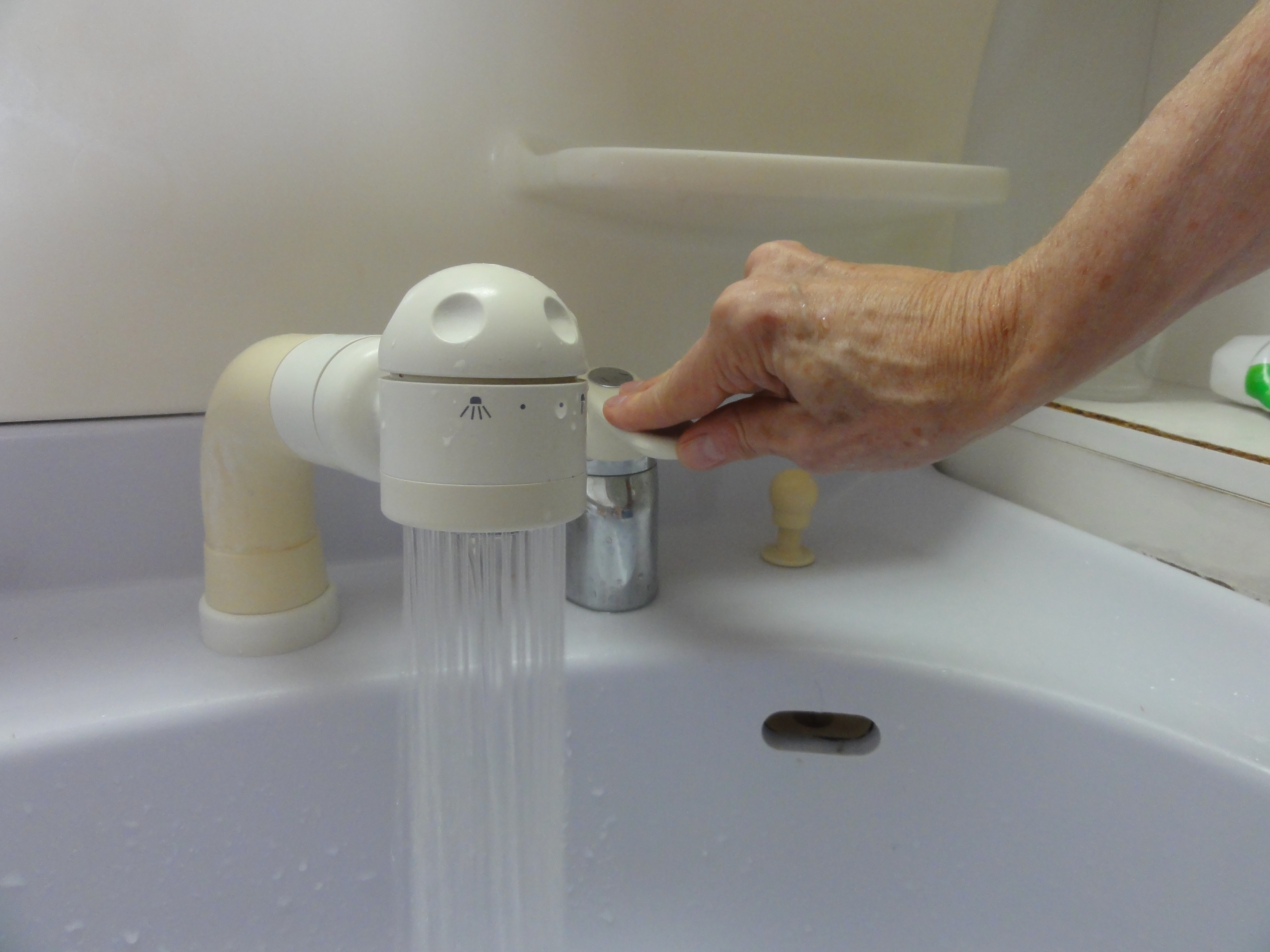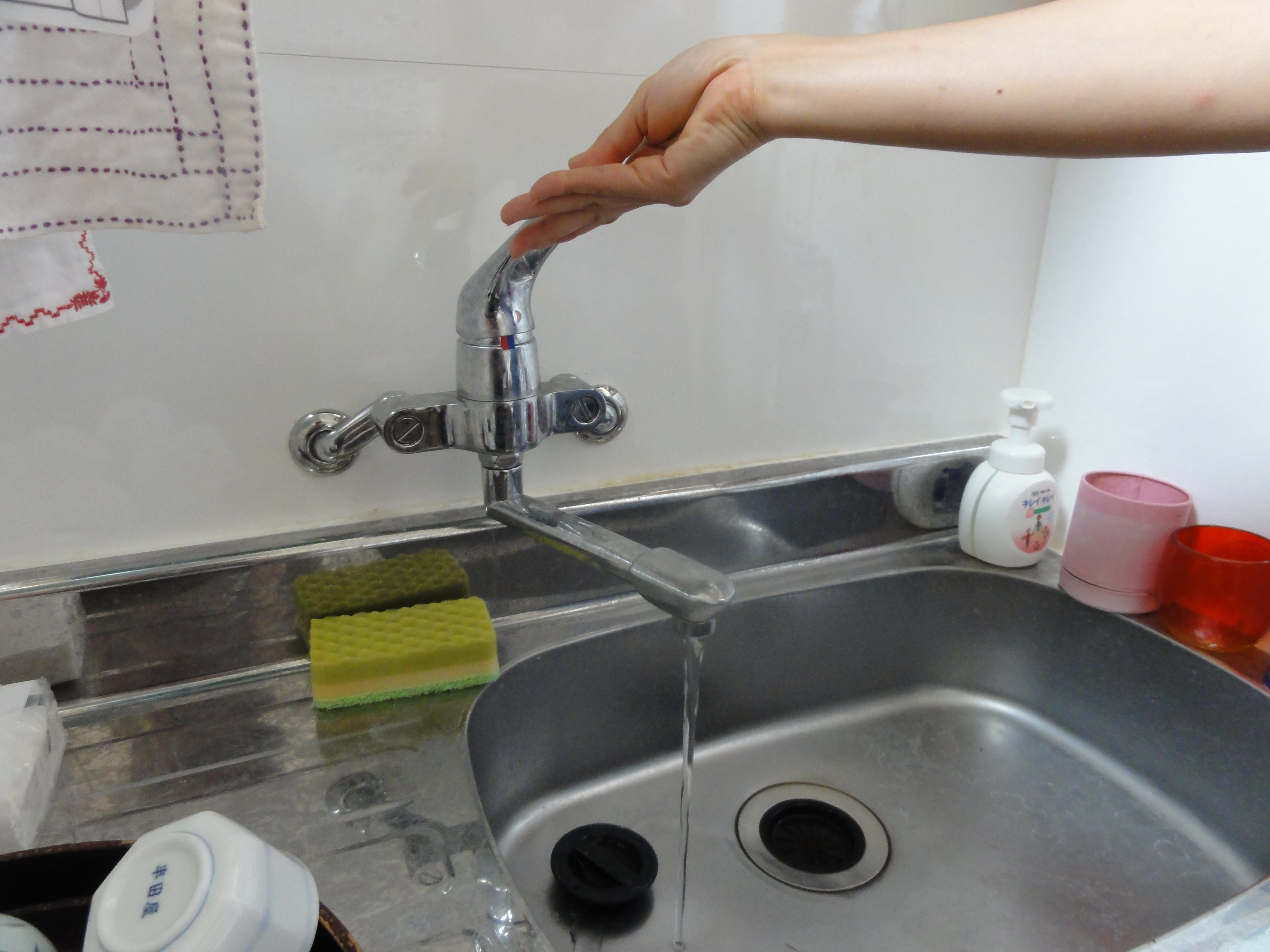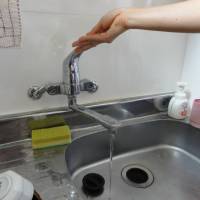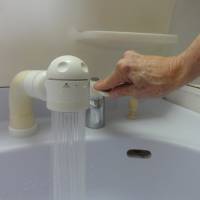Dear Alice,
Do you take plumbing questions? I ask because there is something very quirky about the faucets in the house I rent here in Japan. They are the type that mix the hot and cold water, and are controlled by a single lever. In the kitchen, you lift the handle to start the flow of water, which I consider the normal order of things. But in the bathroom, you have to push down to start the water. When I asked my landlord why, he said it's because of earthquakes. So, what the heck is that?
Mary M, Suita, Osaka Pref.
Dear Mary,
Believe me, you aren't the only one dealing with this. Many Japanese homes, including mine, have a funny combination of what are called age-tome (lift to stop) and sage-tome (depress to stop) faucets; the nomenclature focuses on the how the water is stopped rather than how it is started. My situation happens to be the opposite of yours, which is to say the lift-to-stopper is in the kitchen. It's definitely confusing having both in the same home.
I've also heard this has something to do with earthquakes, but before I plumb into that, let me offer up a little faucet history. Once upon a time, sinks had separate taps for hot and cold water, controlled by separate handles. But in the 1950s, an inventor in California dreamed up a ball valve that mixed hot and cold water while also modulating the volume of flow. Even better, he found a way to control both functions simultaneously with a single lever. He sold his invention to a man who improved the design and called it the Delta single-handle mixing faucet. Today, Delta Faucet Company sells more than a million faucets a month worldwide.
In Japan, this design is called a shinguru rebā (single lever) kongōsen (mixing faucet), and was first introduced in the late 1960s for wash basins in hotels and fancy office buildings. It was only later that they were adopted in homes. Some manufacturers went with the same lift-to-start design developed in the U.S., but others felt it was more intuitive to press down when you want water, since that's the direction the water will flow. For several decades the two styles co-existed in the market, and often in the same home. But in 1997, a decision was made to cease production of the age-tome type, which lifts to stop, over a period of three years.

If you ask someone why, you're likely to hear the same explanation your landlord was getting at, which is that the age-tome faucet was scrapped because of lessons learned in the 1995 Great Hanshin-Awaji Earthquake. In that disaster, there were reports that objects dislodged by the earthquake fell against the levers of age-tome faucets, turning on the water at a time when no one was around to turn it back off. As a result, some residents who fled the shaking returned to find their homes flooded, and in the middle of a disaster that left 1.3 million households without water. It was this experience, people will tell you, that convinced Japan that the age-tome faucet had to go.
But according to Masaya Sasaki of the technical department of the Japan Valve Manufacturers' Association, that theory doesn't hold water.
"It's not true," he told me, when I visited for a faucet briefing. "Although many people believe that lift-to-stop faucets were abolished because of the Kobe earthquake, and you'll see that story repeated in many places on the Internet, in actual fact, it is a total toshi densetsu (urban legend)."
To prove what he was saying, Sasaki pulled out a copy of the Japanese manufacturing standard that relates to faucets, ball taps and flush valves. In section 6.2, c of Japan Industrial Standard (JIS) B 2061: 1997, he pointed to a clause stating that production of lift-to-stop faucets would cease by March 31, 2000. JIS standards are reviewed and revised by committee every five years, he explained, and the committee in charge always prepares a kaisetsu (explanation), that becomes part of the written record. "Which means that anyone," he said, "can look up the reason for a revision."
That was an opportunity I definitely wanted to tap, so we looked together at the kaisetsu for the 1997 revisions. Consumers had been complaining for years that it is confusing and inefficient to have both types of faucets within the same home, it explained, and were pushing for standardization. The committee, while acknowledging that they could have chosen either type, decided in favor of the push-to-stop type because "nearly all overseas products" had adopted that system.
"You see? There's no mention of earthquakes," Sasaki said. "People make that connection because the standards happened to be revised a few years after the Great Hanshin-Awaji Earthquake, but really, it's just a coincidence. The real reason for choosing sage-tome over age-tome, and the only reason, was to bring Japanese production into line with international conventions."
If, by now, you're considering a standardization effort of your own, I would encourage you to check out replacement faucets with the new, government-approved "setsuyu" (hot-water saving) mark. These products include innovative features that reduce energy use by as much as 36 percent, by helping consumers use less hot water when bathing or washing up. An example is a one-touch stop/start button placed at the head of a hand-held shower, so users can temporarily halt the flow, say when lathering up during a shampoo.
One word of warning, however: Although anyone may buy a faucet in Japan, you will be breaking the law if you attempt to install one yourself. This is because the Water Supply Act (Suidō-hō, 1996 revision) stipulates that faucets may only be installed by a shitei suidō kōji-sha (licensed water-supply contractor). Sunday plumbers, beware!




















With your current subscription plan you can comment on stories. However, before writing your first comment, please create a display name in the Profile section of your subscriber account page.